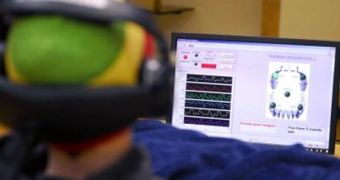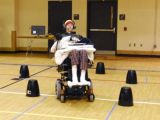Experts at the Georgia Institute of Technology (Georgia Tech) have recently created an innovative system of controlling wheelchairs that is surely going to benefit those who suffer from paraplegia and other forms of paralysis and cannot move on their own. They've created a driving system for the prosthetics that relies solely on the tongue for control. Users place a device in their mouth, and control it with their tongues. Hooked to a computer, the system transforms the movements of the tongues in commands for the wheelchair's drive train, which then propels the person forward, backwards or sideways.
“This clinical trial has validated that the Tongue Drive system is intuitive and quite simple for individuals with high-level spinal cord injuries to use. Trial participants were able to easily remember and correctly issue tongue commands to play computer games and drive a powered wheelchair around an obstacle course with very little prior training,” Georgia Tech School of Electrical and Computer Engineering Assistant Professor Maysam Ghovanloo explains at the end of the successful trials.
The trials focused mostly on individuals suffering from tetraplegia, as a result of high-spinal cord injuries, mostly between the C3-C5 cervical vertebrae. Each of the participants had a small, rice grain-sized magnet attached to their tongues, with tissue glue. A headphone-shaped device was then placed over their heads, which allowed for the movement of the magnet to be recorded in real time. The data was then wirelessly transmitted to a portable computer, located on the wheelchair itself.
The array of sensors in the headphones allowed the computer to understand if the participant was moving their tongue forward, backwards or sideways, and transformed those impulses in commands for the drive train. Additionally, the system was also successfully used for controlling a mouse on a computer screen. Further details of how the Tongue Drive system operates are available in the June issue of the journal IEEE Transactions on Biomedical Engineering.
“All of the subjects successfully completed the computer and powered wheelchair navigation tasks with their tongues without difficulty, which demonstrates that the Tongue Drive system can potentially provide individuals unable to move their arms and hands with effective control over a wide variety of devices they use in their daily lives,” Ghovanloo concludes.

 14 DAY TRIAL //
14 DAY TRIAL // 
